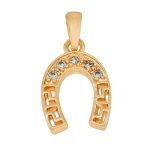The history of wire jewelry dates back to ancient civilizations, where the art of using wire to create intricate and beautiful pieces was developed. This versatile material has been utilized in various cultures and periods throughout history, each contributing unique techniques and styles to the craft. From simple wire wrapping to elaborate wire weaving, the evolution of wire jewelry making has shaped its significance in both traditional and modern fashion.
As we delve into the historical roots of wire jewelry, it becomes evident that this form of adornment has not only stood the test of time but also continues to inspire contemporary designs. From the medieval and Renaissance periods to the present day, wire jewelry has played a significant role in shaping cultural fashion trends, offering a timeless elegance that transcends generations.
In this article, we will embark on a journey through time as we explore the ancient origins of wire jewelry and its evolution through different cultures and historical periods. We will also examine how these rich traditions have influenced modern jewelry design and discuss the potential for innovation and new developments in the future of wire jewelry making. Join us as we discover the beauty and versatility of wire as a material for jewelry making throughout history.
Ancient Origins
Wire jewelry has a rich and diverse history that can be traced back to ancient civilizations. The use of wire for making jewelry dates back to as early as 3000 BC, with evidence of wire adornments found in ancient Egyptian tombs. These early civilizations utilized simple techniques such as wire wrapping and coiling to create intricate designs using gold, silver, and other metals.
During the Bronze Age, wire jewelry became more prevalent as advanced metalworking techniques allowed for the creation of finer and more elaborate designs. In ancient Rome, wire jewelry was favored by both men and women, with intricate wirework adorning rings, bracelets, and necklaces. The techniques used during this time included filigree work, where thin wires were twisted and soldered together to form delicate patterns.
In ancient China, jade pendants were often embellished with gold wire work, showcasing the cultural significance of wire jewelry in different parts of the world. Similarly, in India, traditional Kundan jewelry featured elaborate settings created using fine wires to secure gemstones in place.
The ornate nature of these ancient wire jewelry pieces reflects the craftsmanship and artistry that have been passed down through generations. As we explore the history of wire jewelry, it becomes evident that these ancient civilizations laid the foundation for the techniques and styles that continue to influence contemporary wire jewelry making today.
- Ancient Egypt: Evidence of wire adornments found in tombs
- Bronze Age: Advancements in metalworking techniques led to finer designs
- Ancient Rome: Both men and women favored intricate wirework on their jewelry
Medieval and Renaissance Period
Wire Jewelry Techniques
During the medieval and renaissance periods, wire jewelry evolved significantly in terms of technique. The use of wire in jewelry making became more intricate and delicate, with artisans developing new methods for shaping and weaving wire to create elaborate designs.
This period saw the emergence of techniques such as filigree, where metal wires are twisted and soldered together to form ornate patterns, as well as chainmaille, which involves linking metal rings together to form a mesh-like structure. These techniques marked a shift towards more complex and refined forms of wire jewelry, reflecting the changing tastes and fashion trends of the time.
The Symbolism of Wire Jewelry
In medieval and renaissance Europe, wire jewelry held significant symbolism beyond its aesthetic appeal. It was often used as a status symbol among the nobility, with intricate wirework designs adorning crowns, brooches, and other accessories worn by royalty and the upper class. Additionally, wire jewelry was also imbued with religious symbolism, with many pieces featuring motifs inspired by Christian iconography. Wire crosses, rosary beads, and ornate reliquaries were commonly crafted using wire to serve as expressions of faith and devotion.
Influence on Modern Design
The tradition of wire jewelry making during the medieval and renaissance periods has left a lasting impact on modern jewelry design. Many contemporary designers draw inspiration from historical wirework techniques, incorporating elements such as filigree patterns or chainmaille weaves into their creations.
The symbolic significance of wire jewelry has also endured, with modern interpretations often featuring motifs that evoke themes of power, spirituality, or heritage. As such, the influence of medieval and renaissance wire jewelry continues to resonate in the world of contemporary fashion and artisanal craft.
Wire Jewelry in Different Cultures
Wire jewelry has a rich and diverse history that spans various cultures around the world. Different civilizations have developed their own unique styles and techniques for creating intricate and stunning wire jewelry. Let’s explore the diverse styles and techniques of wire jewelry in various cultures:
- Ancient Egypt: The ancient Egyptians were known for their exquisite wire jewelry, often incorporating colorful gemstones and symbolic designs. They used techniques such as filigree and granulation to create delicate pieces of jewelry that showcased their mastery of metalworking.
- Viking Culture: The Vikings were skilled in the art of wire weaving, creating bold and geometric designs using precious metals such as silver and gold. Their intricate wire bracelets and necklaces often featured motifs inspired by nature and mythology.
- South Asian Traditions: In countries like India, Pakistan, and Bangladesh, wire jewelry has been a cherished art form for centuries. Artisans use techniques such as Kundan and Jadau to create elaborate wire-set gemstone jewelry that is renowned for its opulence and craftsmanship.
As we can see, the history of wire jewelry is deeply intertwined with the cultural traditions of different societies. Each culture has contributed its own unique styles and techniques to the art of wire jewelry making, showcasing the creative ingenuity of artisans throughout history. This diversity continues to inspire modern jewelry designers as they seek to honor these traditions while also pushing the boundaries of innovation in their craft.
Evolution of Techniques
The history of wire jewelry can be traced back to ancient civilizations, where wire was used to create intricate and ornate jewelry pieces. One of the earliest techniques used in wire jewelry making is simple wire wrapping, where a piece of wire is manipulated and twisted around a stone or bead to create a setting or embellishment. This technique was commonly used by ancient Egyptians, Greeks, and Romans to create stunning adornments for both men and women.
As time progressed, the techniques of wire jewelry making evolved, giving rise to more complex and elaborate methods such as wire weaving. In this technique, multiple strands of wire are intricately woven together to create stunning patterns and designs. This technique became popular during the Medieval and Renaissance periods, where artisans created stunning filigree designs using fine wires made from precious metals like gold and silver.
Introduction of New Materials
During the Industrial Revolution, the introduction of new materials such as steel and copper led to further innovations in wire jewelry making. These materials allowed for greater flexibility and strength in jewelry design, paving the way for more intricate and detailed creations. The Victorian era saw an explosion of wire jewelry designs, with delicate latticework and intricate metalwork becoming increasingly popular.
Modern Innovations
In the modern era, advancements in technology have revolutionized the techniques of wire jewelry making. Jewelry designers now have access to a wide range of tools and equipment that allow them to create highly detailed and intricate pieces with precision.
Additionally, contemporary artists are experimenting with unconventional materials and mixed media to push the boundaries of traditional wire jewelry making. The evolution of techniques in wire jewelry making continues to inspire creativity and innovation within the artisanal craft, shaping its future and influencing modern jewelry design.
Wire Jewelry in the Modern Era
Wire jewelry has seen a resurgence in popularity in the modern era, with contemporary fashion and artisanal craft embracing the beauty and versatility of this form of jewelry making. As fashion trends continue to evolve, many individuals are turning to unique, handcrafted pieces that showcase their individuality and personal style. Wire jewelry has become a sought-after option for those looking for one-of-a-kind accessories that set them apart from mass-produced items.
One of the factors contributing to the revival of wire jewelry is the growing interest in sustainable and ethical fashion. With an increased focus on environmentally friendly materials and handmade products, wire jewelry fits perfectly into this movement. Artisans and designers are using recycled metals and ethically sourced gemstones to create stunning wire jewelry pieces that appeal to environmentally conscious consumers.
In addition to its eco-friendly appeal, wire jewelry is also celebrated for its adaptability and affordability. The modern era has brought about an appreciation for handmade craftsmanship, and wire jewelry allows artisans to showcase their skills through intricate designs and unique techniques.
From simple wire wrapping to complex wire weaving, there is a wide range of styles that cater to different tastes and preferences. Moreover, the relatively low cost of materials makes wire jewelry accessible for individuals looking to express themselves through stylish yet affordable accessories.
Lastly, the rise of social media and online platforms has contributed significantly to the popularity of wire jewelry in contemporary fashion. Artisans can now reach a global audience with their creations, showcasing their unique designs and connecting with customers who appreciate the artistry behind each piece. This interconnectedness has allowed for a vibrant community of wire jewelry enthusiasts who continue to inspire each other with their creativity and passion for this ancient craft.
| Aspects | Details |
|---|---|
| Materials Used | Recycled metals, ethically sourced gemstones |
| Styles/Techniques | Simple wire wrapping, complex wire weaving |
| Accessibility | Affordable materials make it accessible for all individuals |
The Influence of Wire Jewelry on Modern Jewelry Design
Wire jewelry has a long and rich history, with its influence being felt even in modern jewelry design. The history of wire jewelry can be traced back to ancient civilizations, where it was used for adorning both men and women. It was during this time that simple wire wrapping techniques were developed, laying the foundation for the intricate wire weaving methods used today.
During the Medieval and Renaissance periods, wire jewelry evolved significantly, becoming an integral part of fashion and style. It was during these historical periods that wire jewelry gained prominence as an art form, with skilled artisans creating elaborate and ornate pieces for royalty and nobility. This period saw the use of precious metals and gemstones in wire jewelry, further elevating its status as a symbol of wealth and social standing.
In the modern era, there has been a resurgence of interest in wire jewelry, with contemporary designers incorporating traditional techniques into their work. The history of wire jewelry has inspired modern designers to experiment with different materials, shapes, and forms, leading to innovative and avant-garde creations. As a result, wire jewelry continues to influence modern jewelry design, bridging the gap between tradition and innovation.
| Wire Jewelry History | Influence on Modern Design |
|---|---|
| Traces back to ancient civilizations | Inspired contemporary designers to experiment with traditional techniques |
| Evolved significantly during Medieval and Renaissance periods | Resurgence of interest in wire jewelry in modern era |
| Diverse styles and techniques in various cultures | Bridging tradition with innovation in modern designs |
The Future of Wire Jewelry
As we have explored the rich history of wire jewelry, it becomes evident that this art form has stood the test of time and continues to captivate the imagination of jewelry makers and enthusiasts. From its ancient origins to its evolution through different historical periods and cultures, wire jewelry has proven to be a versatile and enduring medium for artistic expression.
Looking ahead to the future of wire jewelry, we can anticipate exciting innovations and new developments in the world of wire jewelry making. With the advent of modern technology and new materials, we may see a fusion of traditional wire techniques with contemporary elements, opening up endless possibilities for creativity.
As contemporary fashion trends continue to embrace artisanal craft and individualistic style, we can expect to witness a resurgence in the popularity of wire jewelry. This renewed interest in handcrafted pieces reflects a growing appreciation for the unique beauty and personal touch that wire jewelry offers.
In conclusion, the history of wire jewelry provides a rich tapestry of inspiration for modern jewelry designers. As we look towards the future, it is clear that wire jewelry will continue to evolve and enchant with its timeless allure, offering endless opportunities for innovation, creativity, and self-expression. The potential for new developments in the world of wire jewelry making is boundless, ensuring that this art form will remain a cherished tradition for generations to come.
Frequently Asked Questions
Where Did Wire Jewelry Come From?
Wire jewelry has been around for centuries, with evidence of wire earrings dating back to ancient Mesopotamia around 2500 BC. It was also popular in Ancient Egypt and Greece, where artisans used gold and silver wire to create intricate jewelry pieces.
What Is the History of Wire Jewellery?
The history of wire jewelry is closely tied to the development of metalworking techniques. In the Middle Ages, wire jewelry became more elaborate with the use of filigree, a delicate kind of jewelry metalwork made with tiny beads or twisted threads. This technique spread across Europe and Asia, leading to the creation of beautiful wire jewelry pieces.
What Is the History of Wire Craft?
Wire craft has a long history, evolving from basic techniques like twisting and bending wire into more complex forms. In the late 19th century, a resurgence in popularity occurred with the arts and crafts movement, as artists and designers began incorporating wire into their creations.
Today, wire crafting encompasses a wide range of styles and techniques for creating decorative and functional objects using wire as the primary material.

Welcome to my jewelry blog! My name is Sarah and I am the owner of this blog.
I love making jewelry and sharing my creations with others.
So whether you’re someone who loves wearing jewelry yourself or simply enjoys learning about it, be sure to check out my blog for insightful posts on everything related to this exciting topic!





